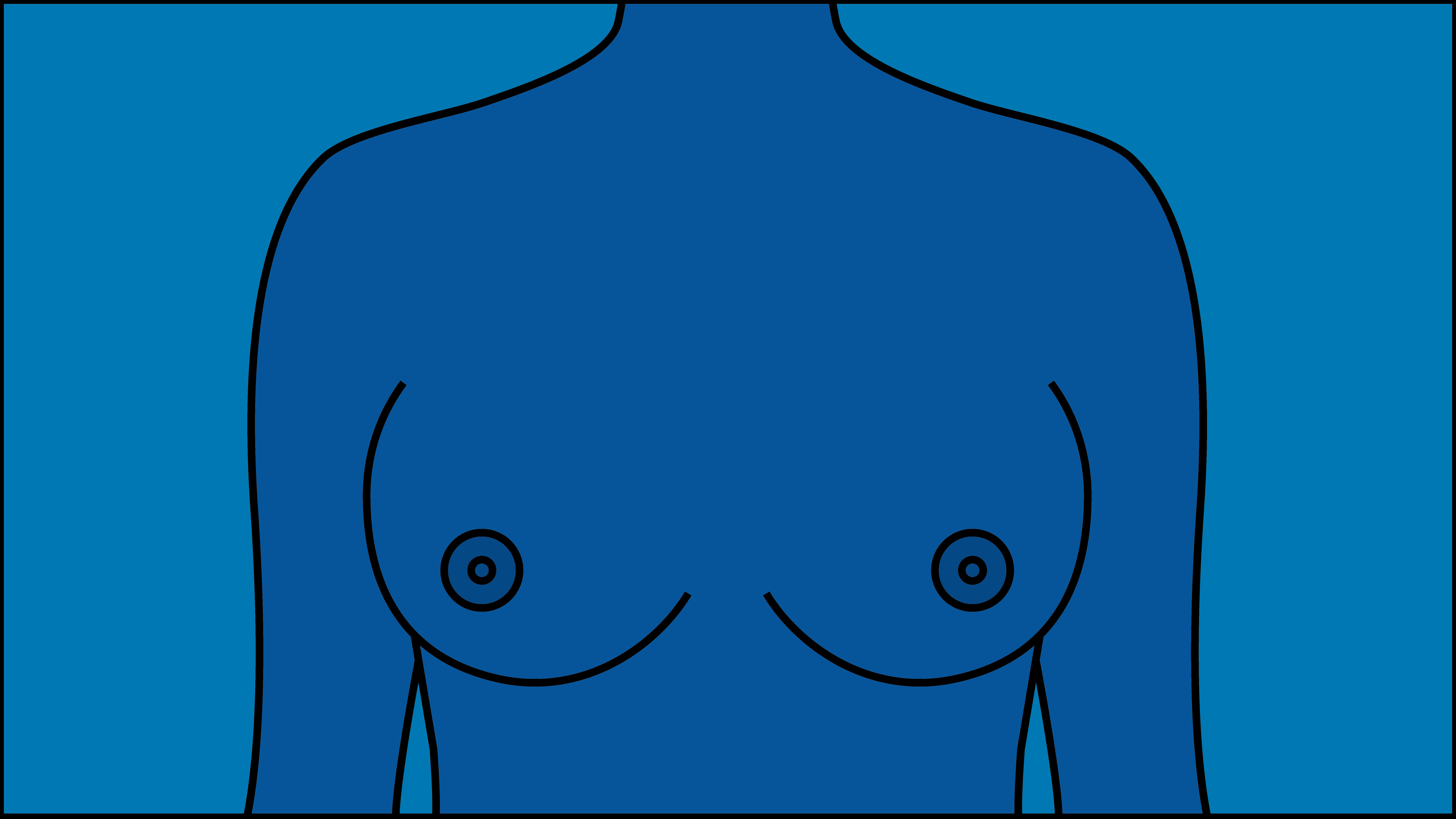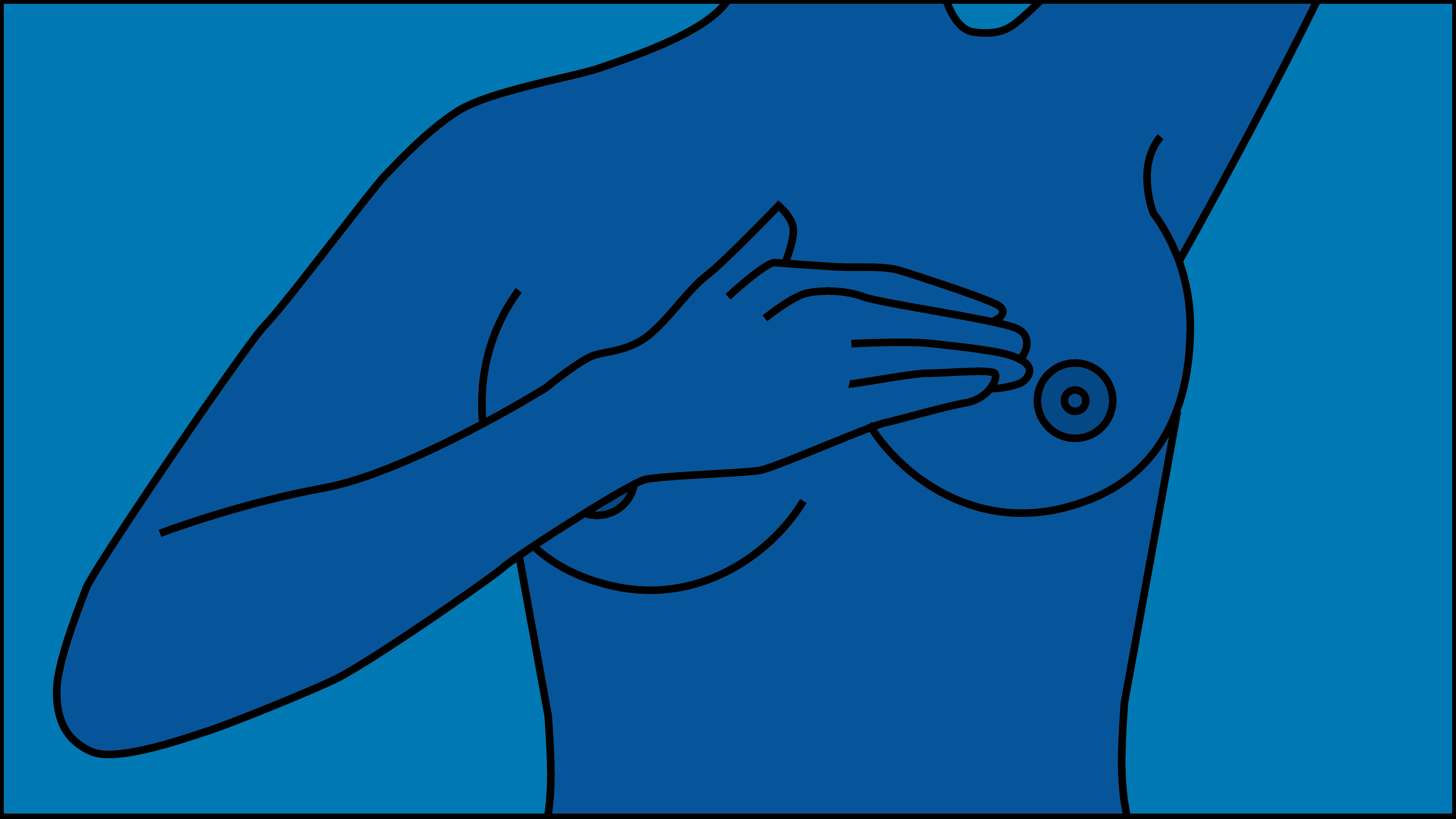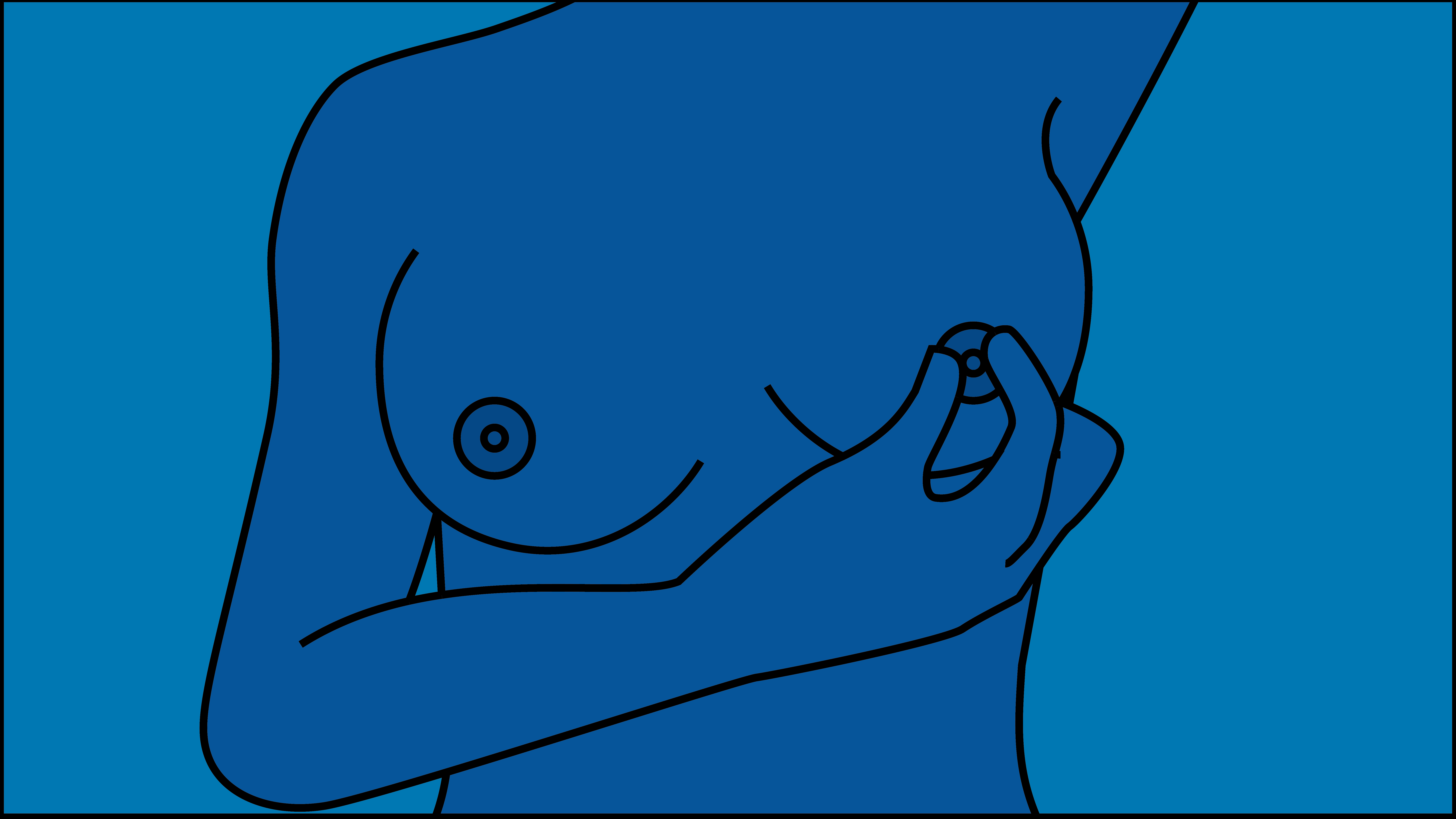In a well-lit room, stand in front of a mirror undressed from the waist up with your arms at your sides.
Take a few moments to look at your breasts in the mirror. Observe their size, shape, and color. Look for visible changes such as dimpling, puckering, redness, or swelling.
Raise your arms above your head and inspect your breasts again. Pay attention to any changes in the appearance of your breasts, including changes in contour or symmetry.
Afterward, place your hands on your hips and flex your chest muscles to help you identify any changes in your breast shape. Also, try observing your breasts in different positions.

Still topless, lie down on your back with a pillow or a towel under your right shoulder and your arm behind your head.
Use the pads of your three middle fingers on your left hand to feel for lumps or abnormalities in your right breast. Use a circular, firm, but gentle motion.
Start from the outer edge of your breasts and move toward the nipple, including your upper chest and underarm area with various levels of pressure to feel different layers of breast tissue.
Repeat on the left side.

While still lying down, gently squeeze each nipple between your thumb and forefinger.
Look for any discharge (other than breast milk if you’re breastfeeding), such as blood or clear fluid.
Note any unusual changes, such as inverted nipples (if they were not previously inverted) or persistent nipple pain.

Remember, you are your best advocate and the most familiar with your own body. Regularly performing breast self-examinations, ideally once a month, will ensure you stay ahead of breast cancer.
Starting with the visual examination helps you notice any visible changes in your breasts' appearance, making it an essential part of early breast cancer detection.
If you ever find a lump, experience persistent breast pain, notice nipple discharge, or observe any other concerning changes, consult a healthcare professional for a thorough evaluation.
Regular mammograms and clinical breast exams are also crucial components of breast cancer screening for early detection, and early detection saves lives!!
If you're interested in sharing your story with us, please contact us. If you know someone who may be interested, please feel free to put us in contact as well.
Julia Comita
Director, Photographer, Producer
info@juliacomita.com
Stephanie Francis
Director, Designer, Producer
steph@stephaniefrancis.net